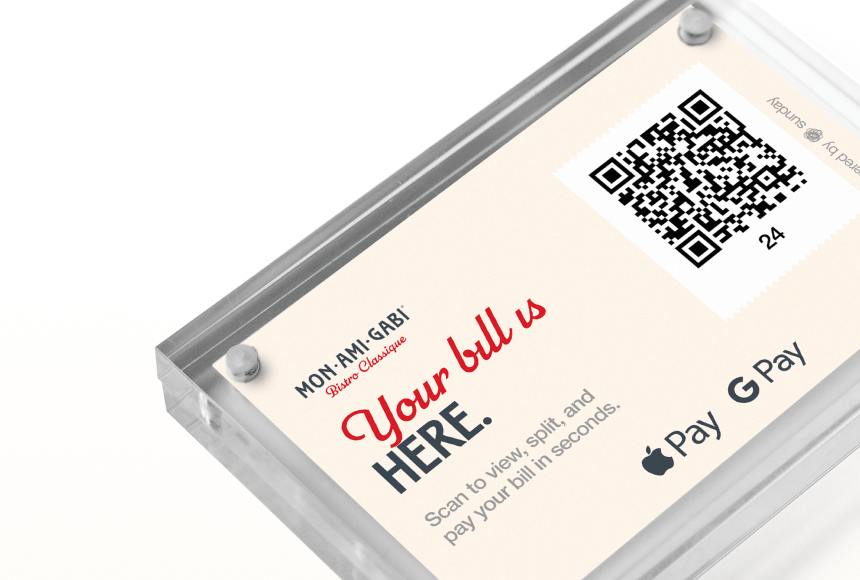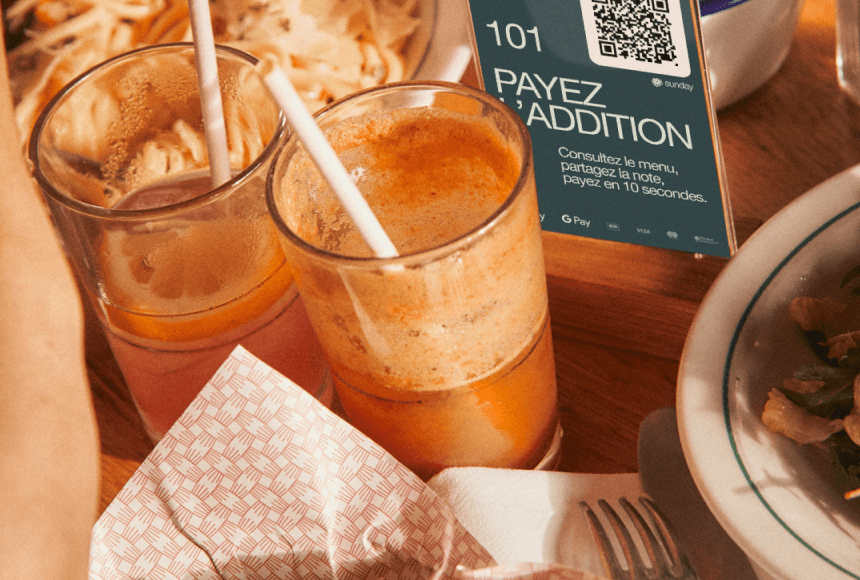
Automatic Tip Suggestions: A Fresh Take on Modern Hospitality
The Ever-Shifting Culture of Tipping in the United States
Tipping is woven into the fabric of American dining. From casual neighborhood cafés to upscale, white-tablecloth restaurants, it’s customary for guests to leave an extra percentage on top of the bill. But over the past decade, tipping culture has evolved, reflecting broader shifts in the service industry and consumer behavior.
Gone are the days when a 15% tip was standard. Today, 18% to 20% is often expected, and some guests willingly pay 25% or more—especially if they’ve enjoyed exceptional service. Economic pressures, the rise of gig-economy tipping (think rideshares and delivery services), and enhanced awareness of fair wages have all contributed to these changes. Meanwhile, new technologies—like mobile payment apps, QR code-based systems, and innovative point-of-sale integrations—make it simpler than ever for restaurants to prompt or “nudge” guests to leave a gratuity.
That’s where the conversation about automatic tip suggestions comes in. Once considered a convenient option on large-party checks, automated tipping prompts now pop up regularly on personal bills. But for restaurant owners, managers, and even staff members, questions remain: Are automatic tip suggestions really beneficial? Do they promote fairness, or might they sometimes strain the guest experience?
In this article, we’ll explore the ins and outs of automatic tip suggestions in 2025. We’ll dive into reasons for their popularity, discuss how technology has transformed tipping, and outline best practices for restaurant owners looking to adopt—and adapt—this modern approach to hospitality.
Why Automatic Tip Suggestions Are Gaining Momentum
If you’ve noticed an uptick (pun intended) in automatic tip prompts, you’re not alone. An increasing number of restaurants now offer guests an easy way to settle the bill via QR code, smartphone apps, or new-generation payment terminals. Beyond the convenience, there are several factors driving this trend:
- Changing Payment Habits: Many guests now use credit cards, debit cards, or digital wallets exclusively. Automated tip suggestions pop up during these transactions and encourage guests to add gratuity with a quick button tap.
- Streamlined Operations: Eliminating the back-and-forth of cash transactions helps restaurants run more efficiently, save time, and reduce manual errors when calculating credit card tips.
- Transparency and Clarity: Tip suggestion screens can clarify the math for guests, presenting dollar amounts or percentages that help them feel confident about how much to leave.
- Potential Increase in Staff Earnings: When tip suggestions are present, guests are often reminded (or encouraged) to tip at higher percentages, which can positively impact servers’ incomes.
At the same time, these practical benefits need to be weighed against potential guest discomfort. Technology can streamline processes, but it can also feel pushy if not handled with tact and warmth. Balancing these factors is a big part of deciding whether or not automatic tip suggestions are right for you.
The Pros of Automatic Tip Suggestions
Restaurant owners across the US are embracing automatic tip suggestions for many compelling reasons. Let’s examine some of the benefits that stand out:
- Boosting Efficiency: A quick transaction flow frees your staff to focus on what they love most: delivering stellar customer service. Instead of fiddling with a calculator or explaining tip amounts on each table, servers can keep their attention on grocery orders, plating, or making sure every dish is prepared to perfection.
- Encouraging Fair Tips: In an era when the cost of living is soaring, setting a fair tip baseline directly supports your servers’ and other team members’ finances. This is especially relevant in regions where tipped wages haven’t always kept pace with inflation.
- Immediate Feedback Loop: Many modern systems let guests leave quick feedback—stars, comments, or even a prompt for a Google review—right after tipping. This instant feedback can transform how you measure service quality and track guest satisfaction over time.
- Data Insights: Automated tip suggestion platforms often generate analytics. You can track average tip percentages, see patterns based on dayparts or meal types, and glean data that informs pricing or promotions. These insights are invaluable for fine-tuning both front-of-house and back-of-house operations.
As a restaurant owner, you might find that these advantages align perfectly with your goals: happy employees, smoother processes, and a streamlined guest experience.
Restaurants using sunday’s QR code payment solution, for instance, automatically prompt guests to leave a tip before they finalize their payment. This gentle nudge can help them remember the importance of gratuity—especially when a busy schedule or other distractions could make them simply forget.
The Cons of Automatic Tip Suggestions
However, automatic tip suggestions do come with potential pitfalls, and ignoring these could tarnish the guest experience. What you don’t want is to alienate or annoy the very people you’re trying to serve. Let’s look at some downsides:
- Feeling of Pressure: Some guests might see tip prompts as pushy or guilt-inducing. If the suggested percentages seem too high or too numerous, it can leave guests feeling reluctant to return.
- Potential Oversight of Service Quality: Automatically suggested tips risk flattening the feedback loop. When everything is automated, guests might feel they don’t need to consider how good (or less-than-stellar) their dining experience was, and your staff may not get the honest feedback they need to grow.
- Cultural or Generational Differences: Tipping norms can vary across cultures and generations. Automated suggestions might not align with everyone’s personal belief about tipping, leading to confusion or frustration.
- Dependency on Technology: From software bugs to device glitches, technology isn’t foolproof. A sudden system crash could lead to awkward moments at the table, dampening the final impression you leave with your guests.
Striking a balance is key. If you decide to implement automated tip suggestions, consider offering multiple percentage options and ensuring your staff is well-trained on how to guide guests through the process gently and respectfully.
Best Practices for Implementing Automatic Tip Suggestions
As an owner or manager, how do you introduce automatic tip suggestions without compromising hospitality? Below are some actionable steps:
- Set Reasonable Defaults: Choose percentage suggestions that make sense for your location and audience. Common defaults are 18%, 20%, and 25%, but you might offer a lower initial suggestion if you cater to budget-conscious clients.
- Provide a Custom Tip Option: Always include an option to type in a custom amount. This empowers your guests to tip exactly what they feel is fair, without pressure.
- Train Staff on Guest Engagement: Teach your team to explain how the payment flow works. It shouldn’t come off as a demand, but as a convenient feature. Encourage them to use warm, friendly phrases—like offering a polite heads-up that the tip prompt is optional.
- Transparency in Communication: If guests feel blindsided by automatic suggestions, they may become uncomfortable. Display signage or note on your menu that shows tip options, so diners know what to expect when they receive the bill. This fosters trust.
- Gather and Analyze Feedback: Use any feedback tools embedded in your payment solution. If you notice repeated complaints about feeling pressured, tweak your default settings or your script for servers.
- Stay Compliant with Local Regulations: Some states or municipalities have specific rules around service charges, credit card surcharges, or tip pooling. Make sure you’re up to date on these regulations to avoid potential legal complications.
Implementing these strategies can help you benefit from modern technology while still protecting the experience that keeps guests coming back. Remember: You don’t want to sacrifice your personal touch at the altar of convenience.
Real-World Example: La Terraza’s Experience
Imagine you run a bustling Tex-Mex restaurant called La Terraza. Over the last few years, your team has noticed a consistent challenge: peak times see lines of customers waiting for seating, and busy staff juggling both takeout orders and dine-in service. You decide to adopt an innovative payment terminal system that includes automatic tip suggestions along with a QR code payment option.
Before implementation, you train your servers to handle the new system with confidence. They learn to mention the tip prompt in a quick, friendly manner: “When you scan the QR code, you’ll see three tip choices and a ‘custom amount’ button—please pick what feels comfortable for vous.” (Here, we’re giving a nod to the warm flow of conversation that also respects each person’s freedom to choose.)
Within the first month, you see a noticeable difference:
- Staff Efficiency: Transactions finalize faster. Guests like scanning their bills and punching in payments. No more waiting for the server to run to the register.
- Increased Tips: Average tip percentages creep up from 17% to around 20%. Your staff is happier, and it shows in the way they welcome repeat customers.
- Improved Guest Experience: Because servers aren’t scrambling to process multiple checks by hand, they can spend more time chatting with diners, making menu suggestions, and ensuring empty glasses get refilled.
But you also discover something else: a small subset of patrons feel uncomfortable with the automatic prompts. Some note it in feedback forms. They say the 25% suggestion feels “pushy.” As a result, you tweak your default prompts to 15%, 18%, and 20%. You also add bolder text that reads, “We value your support—choose what you prefer!” The subtle change in wording eases the pressure, and the negative feedback nearly disappears.
This is just one scenario, but it captures how dynamic and responsive you need to be. Every restaurant has unique clientele, staff, and vibe. Making small adjustments can help you find that sweet spot where technology enhances hospitality rather than overshadowing it.
Quick Stats and Trends for 2025
If you’re still gauging whether automated tip suggestions fit your restaurant’s future, consider the broader trends:
- Card and Mobile Payments Dominate: In 2022, the Federal Reserve reported that over three-quarters of point-of-sale payments in the US were cashless, leaning heavily on cards and mobile apps. Expect this percentage to grow in 2025, given ongoing digitization.
- Rise of the “Digital Diner”: According to the National Restaurant Association (restaurant.org), an increasing number of customers expect to pay using contactless or smartphone-based options. Restaurants that offer seamless payment experiences tend to see higher satisfaction ratings.
- Contactless and QR Code Growth: Scanning a table sticker to access the menu, place orders, and pay all at once is becoming the norm. This system easily plugs in automatic tip suggestions, removing friction from the tipping decision process.
- Sustainable Restaurant Tech: Innovations around eco-friendly solutions—like e-receipts and reducing paper—also integrate digital tipping. A single device or mobile experience can handle the entire transaction, from ordering to tipping to rating the meal.
If you want to keep pace with industry standards, staying open to these advancements is essential. Still, each establishment’s tipping policy should align with its brand identity and guest expectations.
Looking Ahead to 2025 and Beyond
As more restaurants adopt tip suggestion features—whether through robust payment terminal integrations or easy-to-use QR code solutions—owners and managers are learning how to fine-tune the experience. By choosing fair default percentages, offering custom tip options, and communicating transparently, you can encourage gratuities without leaving guests feeling pressured.
A thoughtful approach to automatic tip suggestions can act as a boon for your restaurant’s culture. Servers benefit from consistent tips, and diners appreciate a frictionless, quick payment process. If done right, it can also reflect your commitment to taking care of staff while providing excellent hospitality—both cornerstones of a thriving restaurant in 2025.
Ultimately, automatic tip suggestions aren’t a one-size-fits-all solution. They need customization, a well-trained staff, and a willingness to pivot as feedback comes in. When balanced skillfully, they can elevate your operations and foster loyalty among both guests and team members.
FAQ
Below are some of the most frequently asked questions about automatic tip suggestions and how to make them work for your restaurant:
- Q: Do automatic tip suggestions discourage guests from leaving higher tips?Often, they do the opposite by providing easy prompts in the 18%–25% range—although there’s always a custom option. Since some guests prefer a higher percentage for standout service, it’s helpful to include at least one upper suggestion.
- Q: How do I handle guests who complain about feeling pressured?Transparency and good communication are key. Let diners know they can select or enter whatever tip amount they would like. Clarify that the suggestions are there for convenience, not as a demand.
- Q: Will my servers see an increase in their actual take-home pay?Research suggests automated prompts can boost overall tip averages. Granted, how much servers take home still depends on factors like service quality and restaurant volume. The technology cannot replace genuine hospitality—it enhances it when used thoughtfully.
- Q: Are there legal implications to adding automatic tips?Certain states have rules governing service charges and tip distribution. Consult with a legal advisor or visit the Department of Labor website for guidelines to ensure you’re compliant.
- Q: Is automatic tipping suitable for every restaurant type?It largely depends on your clientele, concept, and operational style. Fine-dining venues might choose higher default percentages, while fast-casual spots could opt for a smaller range. Test different settings to see what resonates best with your guests.
- Q: How does this tie in with loyalty programs or reviews?Many digital payment solutions allow guests to leave starred ratings or link directly to Google reviews after they’ve paid. Encouraging a quick review in conjunction with tipping can offer valuable insights for your business.
- Q: Can I turn off automatic tip suggestions if they aren’t working?Yes, most modern systems let you adjust settings on the fly. If you find your diners are repeatedly citing discomfort, you can disable or modify the prompts quickly to maintain a positive guest experience.
Find out more today
Drop us your details below and we’ll reach out within the next 24h
More tips means a better service.
More tips mean better guest-experience, and better staff-retention.




